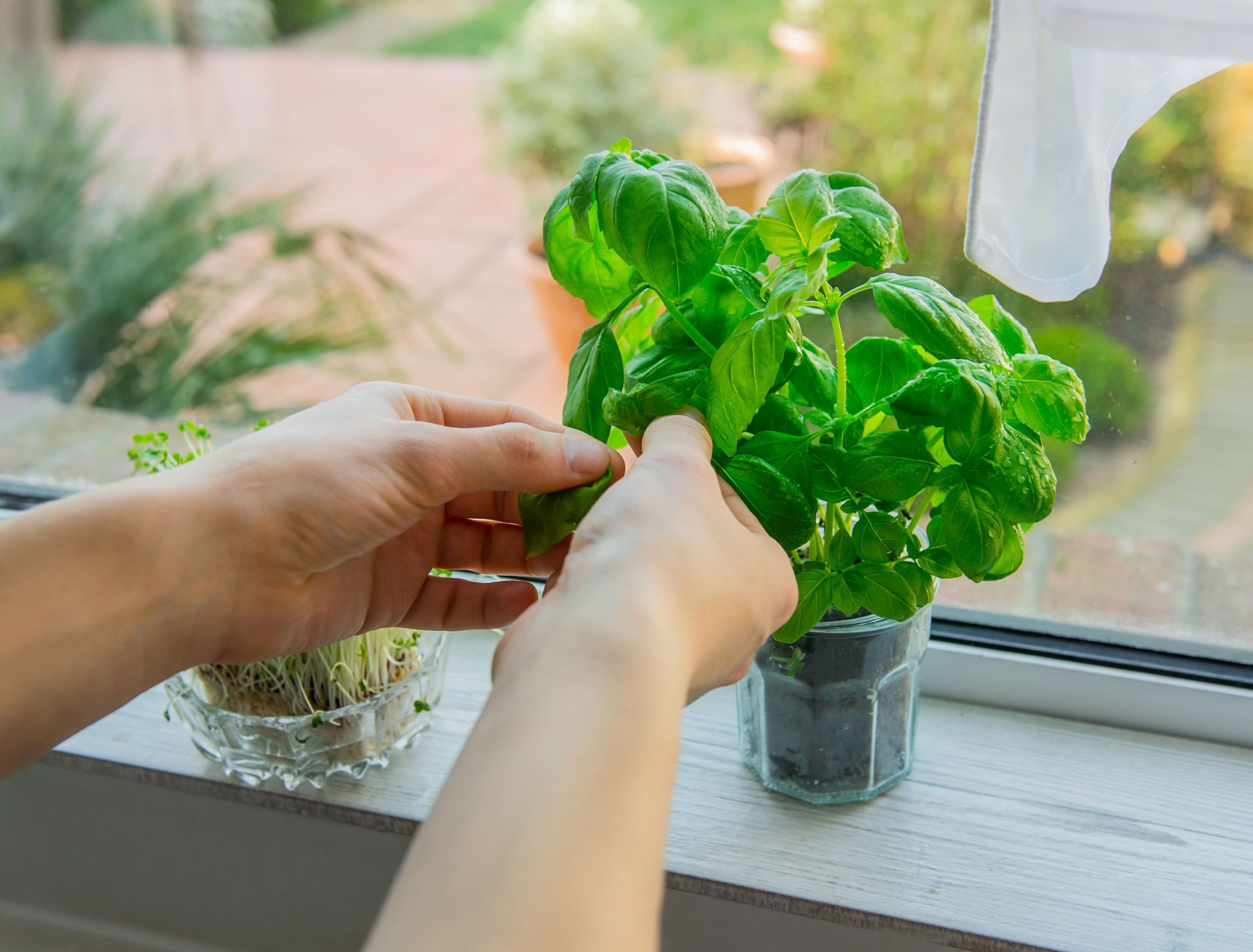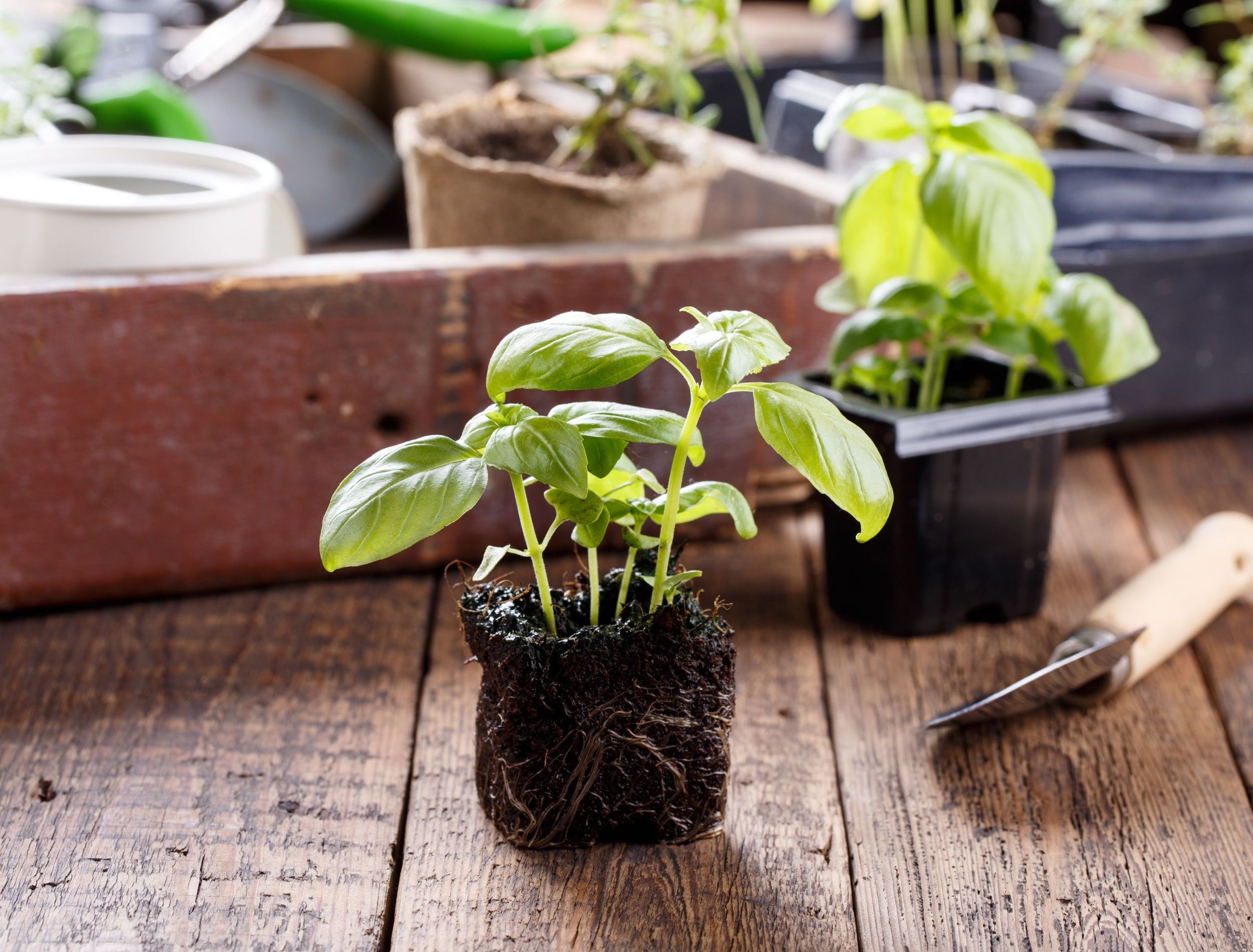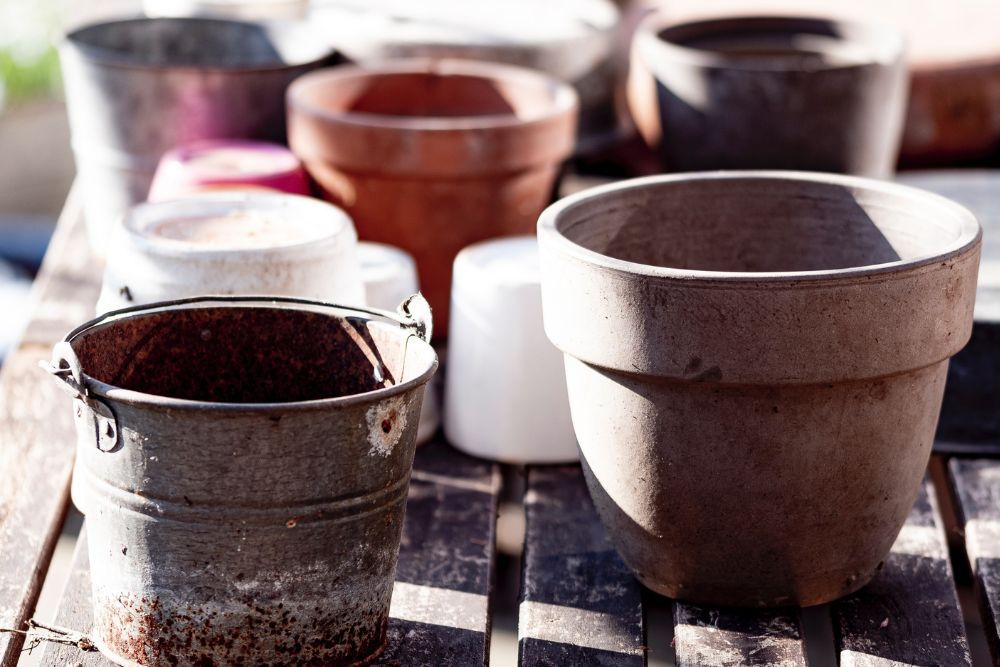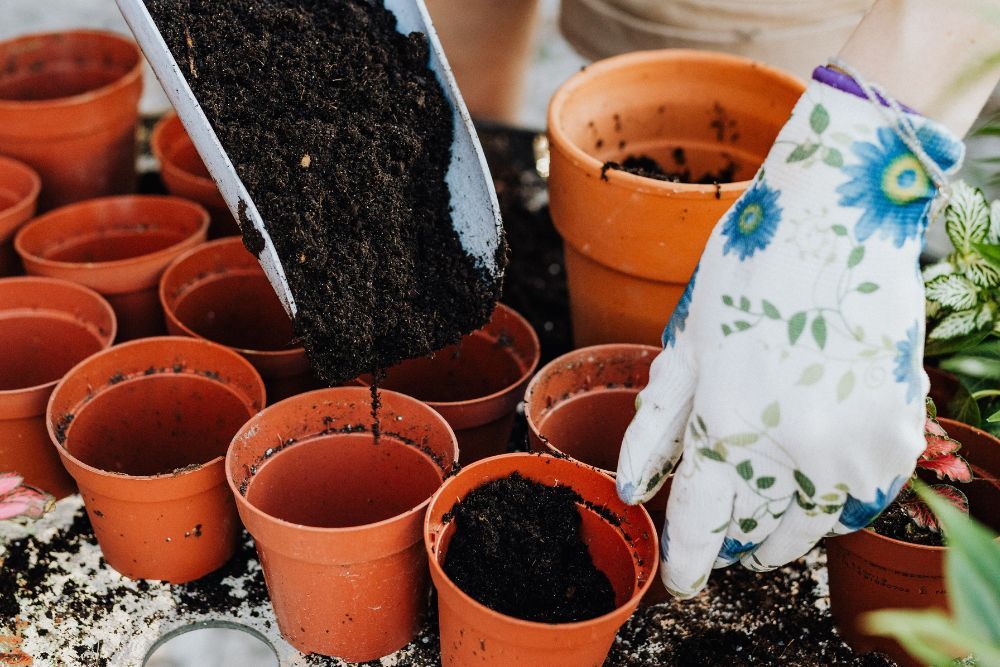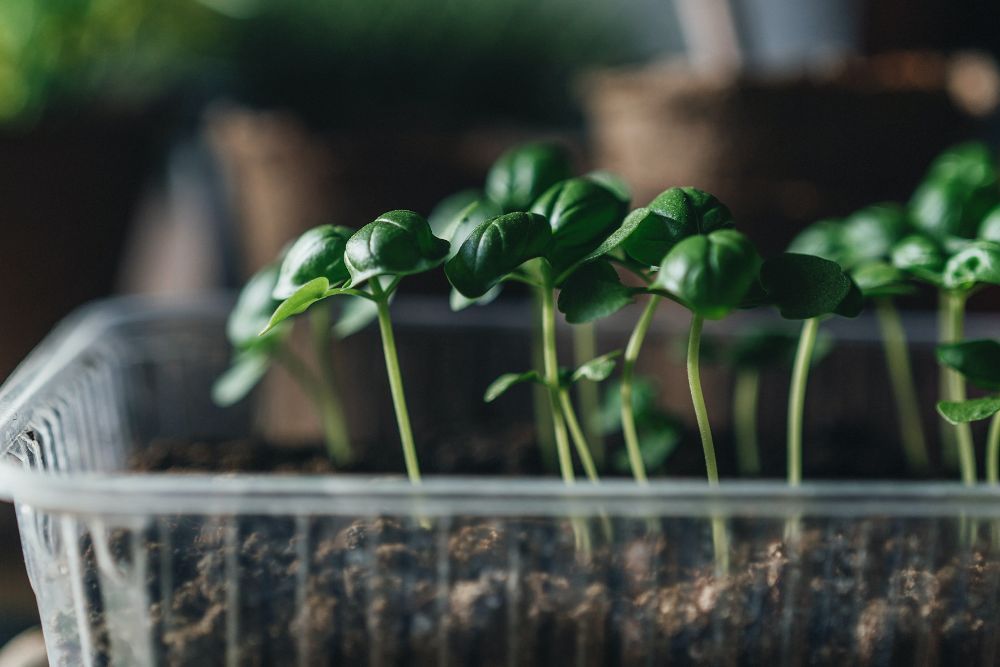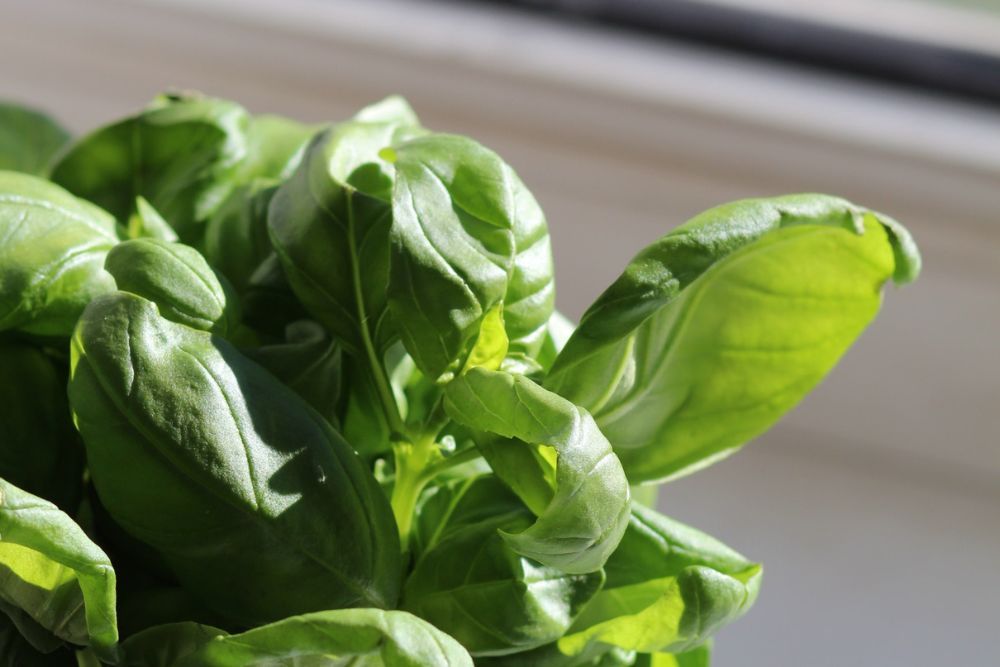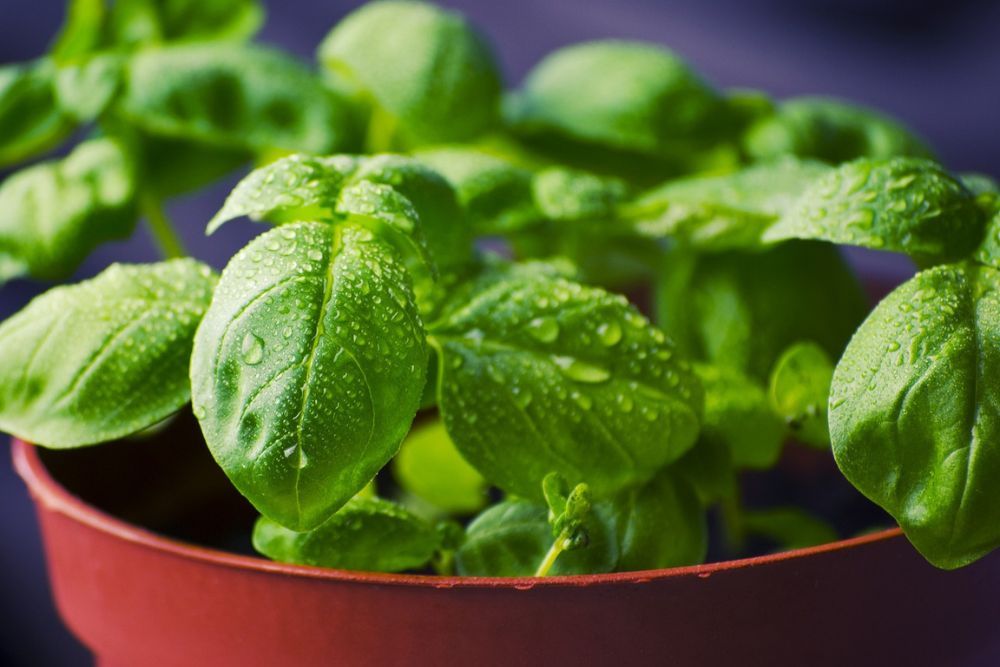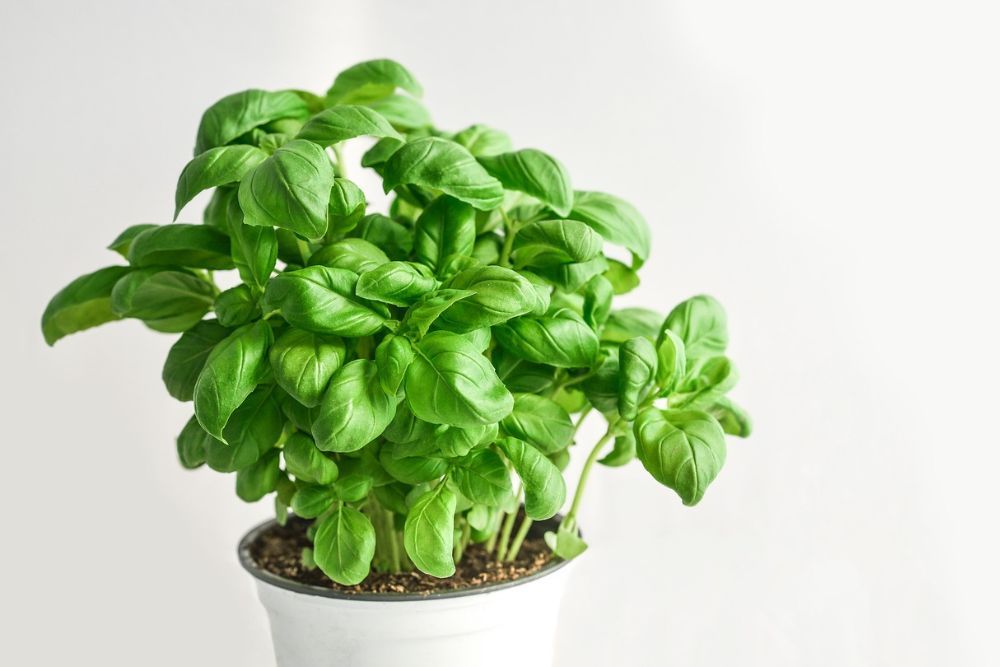Pizza, pesto, and pasta, what do they all have in common? Basil!
Basil is a popular culinary herb found in Italian, Mediterranean, Vietnamese, Indonesian cuisine, and more. This flavor-packed green leaf enhances and elevates the aromas of many tasty dishes, and even drinks. Is it even a Caprese salad without any basil? Is a basil smash drink worth the calories if there's no basil in it? No!
Basil is such an easy herb to grow there's no reason you shouldn't give it a try! Whether you are a novice, amateur, or expert gardener, fresh basil is within your reach. It is even happy to flourish in the comfort of your own home!
Want to start your own garden inside? Here is everything essential to know about growing and caring for basil indoors!
Materials Required
Image credits: Geshas via Shutterstock
Growing a basil plant indoors is simple. With a few helpful materials, the process is that much easier. Here are a few things to help you with raising your own basil plant:
- Basil seeds or basil plant
- Well-draining garden pot
- Potting soil
- Watering can
- Pruning shears or sharp scissors
- Indoor LED grow light (optional)
Pick Your Pot
Image credits: laura adai via Unsplash
Big or small, wide or narrow, basil plants are happy to grow in whatever container you offer. This gives you the freedom to select a pot for your basil that works best within your space.
The key with picking a pot for your basil is to choose one that is well-draining. If there are no drainage holes in your pot drill your own! You can also head to your local nursery to see what options they have.
Fill Your Pot with the Best Soil
Image credits: Karolina Grabowska via Pexels
Because your basil plant is growing indoors, select a healthy potting soil to match. Indoor potting mixes offer the nutrients, such as magnesium, needed for growing basil inside. You can also use natural fertilizers like compost, green tea, or even coffee grounds to give your basil a nice treat. Your soil should contain perlite or peat moss for extra drainage and proper aeration. When it comes to giving your basil the best chance for growth, using rich, well-draining soil is critical.
There are many pre-mixed indoor garden potting mixes available for use. Some brands even offer potting mixes specifically made for indoor herbs. Many gardeners also encourage the use of a soilless mix, which often includes peat, perlite, and even wood bark bases. When searching for your soil, always confirm the soil includes perlite to encourage proper water drainage.
Plant Your Basil
Image credits: Kate Laine via Unsplash
Basil plants are found at nurseries or sometimes at local grocery stores! Seek out your new basil plant, and find one that is full of leaves and looks healthy.
Avoid picking one with discoloration or spotting on its leaves. Basil plants with discoloration are likely signs of disease, of which for a basil plant, there is no cure; Fusarium wilt, downy mildew, and black spot all pray on this herb. These affected plants result in the basil dying quickly.
Depending upon how adventurous you feel, there is also the option to grow your basil plant from seed. Because you are growing your basil plant indoors, it is possible to plant them at any time of the year. However, growing a basil plant from seed requires plenty of sunlight and warmth. For those living in areas with less light in the winter months, using an indoor LED growing light is advantageous.
When planting multiple basil plants, use a seed starter container to first grow the seeds. Then when they have three or more leaves, transplant them into the pot of your choosing. Always allow ample space for your plants to mature. Basil grows and spreads quickly, so to prevent overcrowding space them about three to four inches.
Find the Perfect Spot for Your Basil
Image credits: Katana via Pexels
Once you plant your basil into its new home, situate it somewhere that receives plenty of sunlight. Find a spot in your home where this annual herb will get direct sunlight for at least six hours of the day.
Where you choose to rest your basil pot is up to you. Some choose to put it right on the windowsill, some put it on the table near a sunny window. If you are feeling creative, make a hanging herb garden to suspend your basil and other favorite herbs!
Water Your Basil
Image credits: tookapic via Pixabay
Basil likes moist soil, but overly wet soil is a common issue that leads to root rot, disease, or decay. Water your basil plant about twice a week avoiding the foliage as you go. Depending upon the amount of sunlight your basil plant receives and how large it is, watering times will vary.
To determine whether your plant needs another drink, stick your finger into the soil. If the soil is moist, the plant is fine, however if it is dry, it needs watering. Another way to tell if your plant is requiring water is to lift the pot. A plant with moist soil is heavy. Whereas if the plant is light and easy to lift, it's drying out.
Pro Tip: Check your basil plant regularly to ensure it does not go too long without water. Try to avoid letting your plant wilt before giving it another soak.
Maintain Your Basil Plant
Image credits: Monika via Pixabay
Once your situate your basil plant, work to maintain its growth. This includes pruning it when it becomes too tall and leggy.
Pruning encourages your plant to become bushier, providing you with more basil leaves for use in the kitchen.
Another way to maintain your plant is to keep an eye on it. Your plant will tell you when it is receiving too much or too little of something. If your plant develops yellow leaves, this means it is receiving too much water or not enough sunlight.
If your leaves begin spotting and become discolored, this is usually a result of disease.
Herb Your Enthusiasm
Follow these easy steps for a healthy basil plant that is prepped, potted, and full of potential!
As long as your basil plant has a well-draining pot and soil, and a sunny spot to live, it'll flourish! Create a watering schedule and then start thinking about what new recipes to use your freshly harvested basil in.
Is your new basil plant growing in abundance? Struggling to keep up with all the fresh basil? Take a look at how to properly store basil both at room temperature and in the freezer. Knowing how to do it accurately ensures fresh basil is at your fingertips any time of the year!
Don't forget to share this article with your gardening friends!

